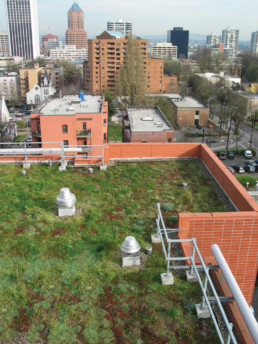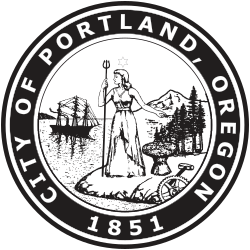Portland unveiled a climate plan that judges emissions based not only on what happens within its borders but also on where the city and its residents source their goods and services.
A key feature of Portland’s 2015 Climate Action Program is its pioneering consumption-based emissions inventory methodology, enabling the city to drive down greenhouse gas emissions within and beyond its borders. The consumption inventory analyzes data on spending by Portland households, government agencies, and business capital investment, taking into account the entire value chain of a product or service. This method enables the city to track the emissions it is responsible for regardless of where those emissions took place, and to better comprehend exactly how the city contributes to climate change and can develop additional mitigation opportunities.
40% reduction in CO2 emissions by 2030
Cities100 – 2015
In addition to this new methodology, the comprehensive plan targets an 80% reduction in emissions by 2050, and includes a host of climate change-related targets for 2020, such as increasing the combined mode share for transit, bicycling, and walking to at least 50%, reducing energy use in existing buildings by 1.7% annually, and increasing the total recovery of solid waste to 80%.

The challenge
Portland, Oregon, has been an American leader on climate change for many years. This ambitious plan builds on decades of action and takes the city a step further by analyzing how Portland residents’ and businesses’ purchasing habits influence greenhouse gas emissions elsewhere in the world. With this knowledge, the city is preparing for even more rigorous climate action in the future.
Co-benefits
Economic The plan builds on Portland’s recent experience in growing the clean technology sector at a much faster rate than the city economy as a whole, now with more than 12,000 local jobs in clean tech.
Environmental The plan aims to double the city’s installed solar capacity to 30 MW, which will reduce emissions by 6,000 metric tons annually 2020.
Health Portland’s Climate Action Program aims to expand urban forest canopy to cover at least 31% of the city, which will improve air quality.
Social The plan focuses on social equity and prioritizes climate actions that reduce disparities in wealth, access to amenities, and public health, by, for example, prioritizing sidewalk construction and tree planting in underserved areas of the city.
About Portland
Portland is the largest city in the U.S. state of Oregon. The city covers 145 square miles and had an estimated population of 639,863 in 2016, making it the 26th most populous city in the United States. The city operates with a commission-based government guided by a mayor and four commissioners as well as Metro, the only directly elected metropolitan planning organization in the United States. The city government is notable for its land-use planning and investment in public transportation. Portland is frequently recognized as one of the world’s most environmentally conscious cities because of its high walkability, large community of bicyclists, farm-to-table dining, expansive network of public transportation options, and over 10,000 acres (4,000 hectares) of public parks.


